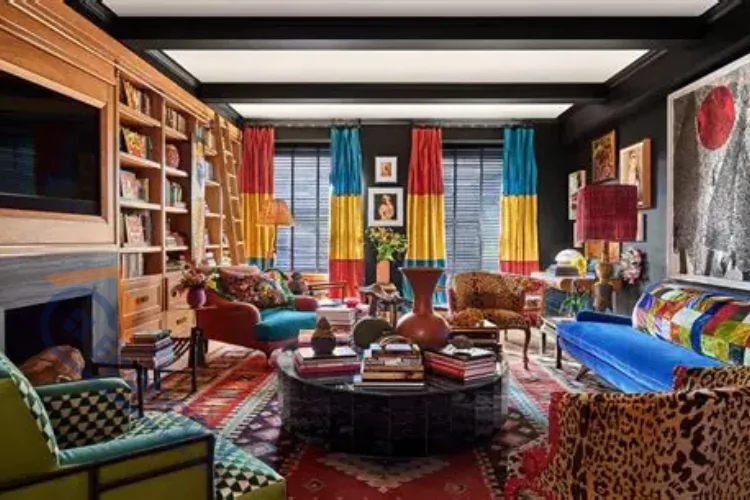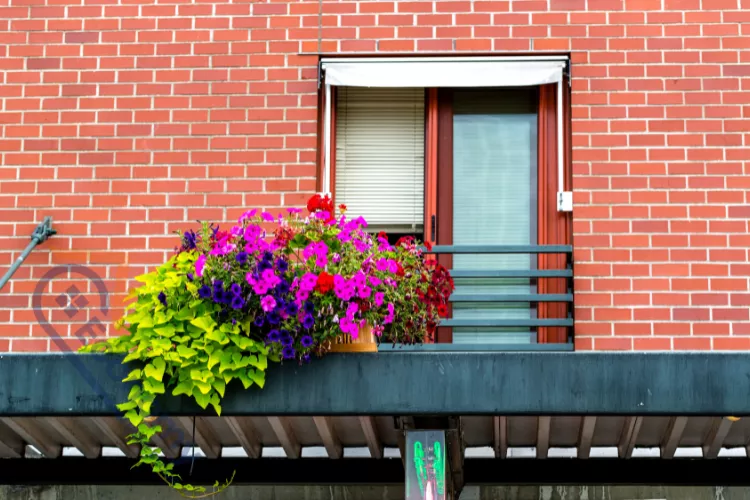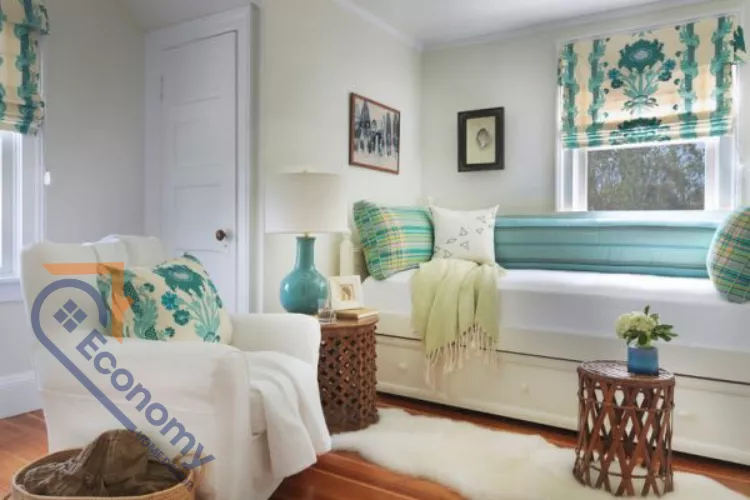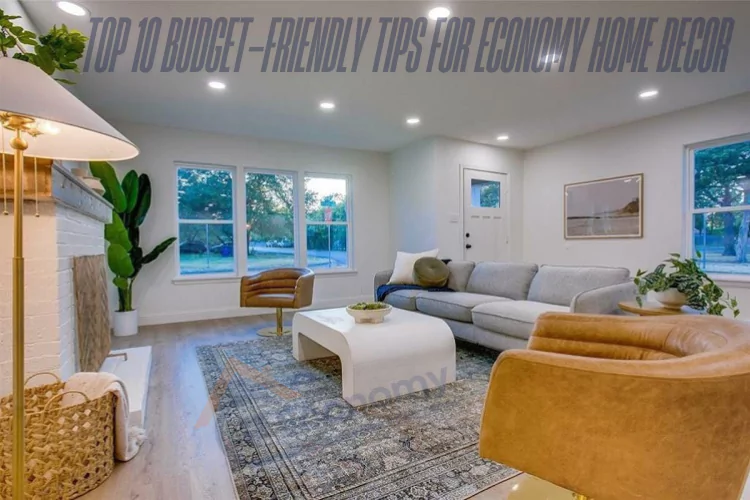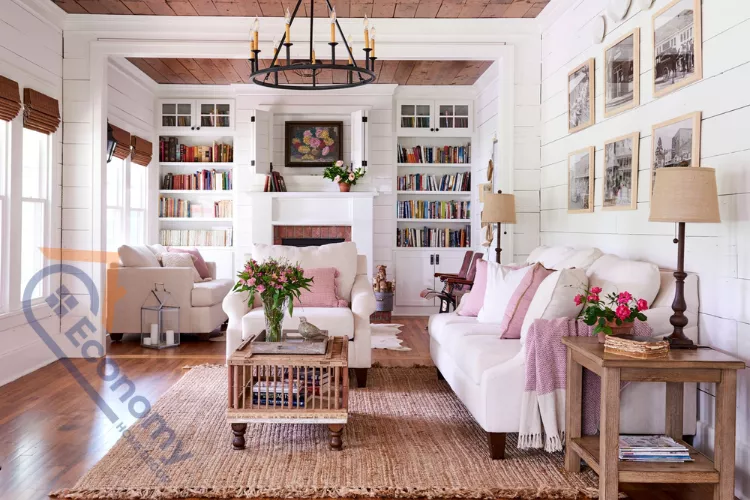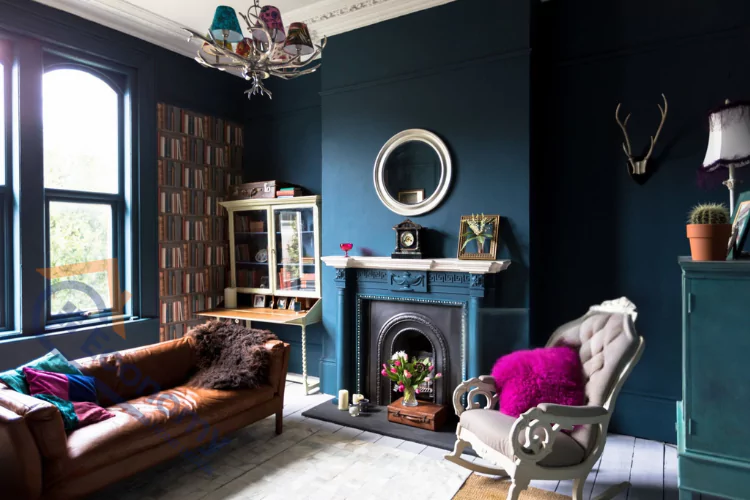Your home is more than just a place to live – it’s your personal sanctuary where memories are made and life unfolds. Whether you’re moving into a new space or looking to refresh your current one, household decoration ideas can completely transform your living environment. The beauty of home decorating lies in its ability to reflect your personality while creating a comfortable, welcoming atmosphere for family and friends.
Decorating your home doesn’t have to break the bank or require professional expertise. With the right approach and creative thinking, you can achieve stunning results using simple techniques and affordable materials. From household decorative items that add character to your rooms to seasonal touches like household christmas decorations, there are countless ways to make your space uniquely yours.
In this comprehensive guide, we’ll explore practical and inspiring household decoration ideas that will help you create a beautiful home environment. Whether you’re interested in budget-friendly solutions, DIY projects, or seasonal decorating, you’ll find everything you need to get started on your decorating journey.
Understanding the Basics of Household Decor
Before diving into specific decorating techniques, it’s essential to understand the fundamental principles of household decor. Good interior design starts with understanding your space, your lifestyle, and your personal preferences. The key to successful decorating lies in creating balance, harmony, and functionality throughout your home.
Color plays a crucial role in any decorating scheme. Neutral colors like whites, grays, and beiges provide a timeless foundation that works well with various household decor items. These versatile shades allow you to experiment with bolder accent colors through accessories, artwork, and textiles. When selecting colors, consider the natural light in each room and how different shades will look throughout the day.
Texture and pattern add visual interest to your spaces. Mixing different textures – such as smooth ceramics, rough wood, soft fabrics, and metallic finishes – creates depth and sophistication. Similarly, combining patterns requires careful consideration of scale and style. Start with one dominant pattern and add smaller, complementary designs to avoid overwhelming the space.
Lighting is often overlooked but significantly impacts the overall ambiance of your home. Layer different types of lighting including ambient, task, and accent lighting to create versatility and mood. Natural light should be maximized whenever possible, while artificial lighting helps create warmth during evening hours.
Budget-Friendly Cheap Household Decor Solutions
Creating a beautiful home doesn’t require a hefty budget. Cheap household decor options can be just as effective as expensive alternatives when chosen thoughtfully. The key is to focus on high-impact changes that deliver maximum visual results for minimal investment.
Thrift stores, garage sales, and online marketplaces offer treasure troves of affordable decorating materials. Look for unique vases, picture frames, books, and small furniture pieces that can be easily updated with paint or new hardware. These secondhand finds often have character and history that new items lack, adding authenticity to your decor.
DIY projects represent another excellent way to achieve cheap household decor. Simple techniques like painting existing furniture, creating your own artwork, or repurposing household items can dramatically transform your space. For example, old glass jars can become stylish storage containers or candle holders with minimal effort and cost.
Dollar stores and discount retailers offer surprisingly good options for basic household decor items. Items like candles, small plants, picture frames, and decorative containers can be found at fraction of retail prices. The key is to shop selectively and choose pieces that align with your overall design vision.
Smart shopping strategies include waiting for seasonal sales, using coupons, and comparing prices across different retailers. End-of-season clearances often provide excellent opportunities to purchase holiday decorations and seasonal items at significant discounts for use in following years.
Creative Wall Decor Ideas for Every Room
Household wall decor serves as the foundation for creating visual interest and personality in your living spaces. Walls offer the largest canvas for expressing your style and can dramatically impact how a room feels and functions.
Gallery walls have become increasingly popular for good reason – they allow you to display multiple pieces while creating a cohesive focal point. Mix different sizes of frames, artwork, photographs, and even three-dimensional objects to create visual variety. Plan your layout on the floor first, then transfer it to the wall for best results.
Floating shelves provide both decorative and functional benefits. They offer display space for books, plants, household decorative items, and collections while adding architectural interest to blank walls. Arrange items at different heights and depths to create dynamic compositions that draw the eye.
Wall decals and removable wallpaper offer temporary solutions perfect for renters or those who like to change their decor frequently. These options come in countless designs and can dramatically transform a space without permanent alterations. They’re particularly effective in children’s rooms, bathrooms, and accent walls.
Consider unconventional household wall decor options like hanging plants, macramé wall hangings, or even collections of hats, musical instruments, or vintage plates. These personal touches tell your story and create conversation pieces that reflect your interests and hobbies.
| Wall Decor Type | Best Rooms | Budget Range | Difficulty Level |
|---|---|---|---|
| Gallery Wall | Living Room, Hallway | $50-200 | Medium |
| Floating Shelves | Any Room | $30-100 | Easy |
| Wall Decals | Bedroom, Kids Room | $15-50 | Easy |
| Statement Mirror | Living Room, Bedroom | $40-300 | Easy |
| Hanging Plants | Kitchen, Bathroom | $25-75 | Easy |
Seasonal Household Decorating Strategies
Seasonal decorating keeps your home feeling fresh and connected to the natural rhythms of the year. Household decorating with seasonal elements doesn’t require complete room makeovers – small, strategic changes can create significant impact while maintaining your core design aesthetic.
Spring decorating focuses on renewal and fresh beginnings. Incorporate light, airy colors like soft greens, pale yellows, and crisp whites. Fresh flowers, potted plants, and nature-inspired household decorative items bring the outdoors inside. Swap heavy winter textiles for lighter fabrics and add elements that suggest growth and new life.
Summer decorating embraces brightness and relaxation. Coastal themes, tropical colors, and natural materials like wicker and bamboo create vacation-like atmospheres. Consider adding elements that suggest coolness and comfort, such as light-colored throws, fresh linens, and accessories in blues and whites.
Fall decorating celebrates harvest and coziness. Warm colors like oranges, deep reds, and golden yellows create inviting atmospheres. Natural elements like pumpkins, gourds, and autumn leaves can be incorporated into existing decor. Textiles become richer and more substantial as temperatures drop.
Household christmas decorations require special consideration as they often dominate spaces for several weeks. Plan your Christmas decorating to complement rather than clash with your existing decor. Traditional colors work well, but don’t be afraid to experiment with non-traditional schemes that reflect your personal style.
DIY Household Decoration Projects
Homemade household decorations offer unique opportunities to create personalized decor while developing new skills. DIY projects can be tailored to your specific needs, style preferences, and budget constraints while providing the satisfaction of creating something beautiful with your own hands.
Painted furniture projects represent excellent starting points for DIY decorating. A fresh coat of paint can completely transform outdated pieces into stylish focal points. Consider techniques like chalk painting, distressing, or stenciling to add character and visual interest. These projects require minimal tools and can be completed over weekends.
Textile projects offer another accessible entry into DIY household decorations. Simple sewing projects like pillow covers, table runners, and curtains can dramatically change room aesthetics. Even those without sewing skills can create no-sew projects using fabric glue, iron-on hemming tape, and basic cutting techniques.
Upcycling projects turn discarded items into beautiful household decor items. Glass jars become vases or storage containers, old wooden crates transform into shelving units, and worn textiles can be repurposed into cleaning rags or craft materials. These projects reduce waste while creating unique decorative elements.
Plant-related DIY projects bring life and freshness to homes while providing ongoing enjoyment. Creating terrariums, propagating plants, and designing container gardens offer rewarding activities that result in living decorations. These projects often require minimal investment but provide long-term benefits.
Holiday and Festive Decoration Ideas
Holiday decorating extends beyond Christmas to encompass year-round celebrations and special occasions. Developing strategies for various holidays ensures your home always feels current and festive while managing storage and budget considerations effectively.
Household halloween decorations can range from subtle autumn touches to elaborate spooky displays. Consider your neighborhood, family preferences, and storage capabilities when planning Halloween decor. Simple changes like orange and black accents, carved pumpkins, and autumn leaves create festive atmospheres without overwhelming existing decor.
DIY halloween decorations with household items offer creative and budget-friendly solutions. Common household materials like toilet paper rolls, plastic bottles, old sheets, and cardboard boxes can be transformed into impressive Halloween decorations with imagination and basic craft skills.
Valentine’s Day, Easter, Fourth of July, and other holidays provide opportunities to incorporate themed elements into your regular decor. Focus on small, strategic additions rather than complete room transformations. This approach keeps decorating manageable while maintaining your home’s overall aesthetic.
Creating a holiday decoration storage system helps maintain organization and extends the life of your decorative items. Label storage containers clearly, photograph arrangements for future reference, and invest in quality storage materials to protect delicate items between seasons.
Incorporating Cultural and Religious Elements
Islamic household decor and other cultural decorating approaches add meaningful depth and personal significance to home environments. Cultural elements should be incorporated respectfully and authentically while complementing your overall design aesthetic.
Religious and cultural artifacts require thoughtful placement and presentation. Consider creating dedicated display areas that honor these items while integrating them harmoniously with other decorative elements. Proper lighting, appropriate backing materials, and respectful spacing show reverence while creating beautiful displays.
Traditional patterns, colors, and motifs from various cultures can inspire modern decorating schemes. Research the meanings and significance behind different design elements to ensure appropriate usage. Many cultural patterns and color combinations offer timeless beauty that works well in contemporary settings.
Handcrafted items from specific cultural traditions add authenticity and support artisan communities worldwide. Textiles, pottery, woodwork, and metalwork from various cultures provide unique decorative elements while honoring traditional craftsmanship techniques.
Small Space Decorating Solutions
Decorating small spaces requires strategic thinking and creative problem-solving. Household decor in limited spaces must balance aesthetics with functionality while avoiding clutter and overcrowding.
Vertical space utilization becomes crucial in small homes. Wall-mounted shelves, hanging planters, and tall, narrow furniture pieces draw the eye upward and create illusions of greater height. Avoid low, sprawling furniture arrangements that emphasize limited floor space.
Multi-functional household decor items serve double duty in small spaces. Ottoman storage cubes provide seating and storage, decorative ladders display blankets while serving as functional storage, and mirror-fronted cabinets reflect light while hiding clutter.
Light colors and reflective surfaces help small spaces feel larger and brighter. Use mirrors strategically to reflect natural light and create illusions of depth. Limit dark colors to small accent pieces rather than major furniture or wall treatments.
Clutter management becomes essential for successful small space decorating. Regular editing of possessions, smart storage solutions, and mindful purchasing decisions help maintain attractive, functional living environments in limited square footage.
Creating Cohesive Design Throughout Your Home
Successful household decorating creates flow and continuity between different rooms while allowing each space to serve its specific function. Developing consistent design themes helps your home feel intentional and well-planned.
Color coordination doesn’t require identical colors in every room but rather related palettes that complement each other. Consider using different shades of the same color family or incorporating consistent accent colors throughout various spaces.
Repeating materials, patterns, or household decorative items in different rooms creates visual connections while maintaining individual room personalities. For example, similar wood tones, consistent metallic finishes, or related textile patterns can tie spaces together subtly.
Lighting consistency helps create cohesive atmospheres throughout your home. Use similar light bulb temperatures and consider how artificial lighting interacts with natural light patterns in different rooms throughout the day.
Traffic flow considerations ensure that decorating choices don’t interfere with daily activities. Furniture placement, door clearances, and pathway management all impact how successfully decorated spaces function for everyday living.
Maintenance and Care of Household Decorations
Proper maintenance extends the life and beauty of your household decor items while protecting your decorating investment. Different materials require specific care approaches to maintain their appearance and functionality over time.
Regular cleaning schedules prevent dust accumulation and damage to decorative items. Develop weekly, monthly, and seasonal cleaning routines that address different types of household decorations appropriately. Some items may require professional cleaning or special techniques.
Rotation strategies help prevent fading, wear, and visual boredom with your decorative items. Storing some pieces while displaying others allows you to refresh your decor regularly while extending the life of individual pieces.
Climate control considerations protect sensitive materials from humidity, temperature fluctuations, and direct sunlight exposure. Understanding how environmental factors affect different materials helps you make informed placement decisions for valuable or delicate items.
Documentation through photographs helps track changes over time and provides references for insurance purposes. Keep records of purchase dates, sources, and any special care instructions for valuable or meaningful decorative pieces.
Key Takeaways
Creating beautiful household decoration ideas involves balancing creativity, functionality, and budget considerations while reflecting your personal style. Success comes from understanding basic design principles, shopping strategically, and focusing on high-impact changes that deliver maximum visual results.
Cheap household decor solutions prove that beautiful homes don’t require large budgets – they require thoughtful planning, creative thinking, and strategic shopping. DIY projects, secondhand finds, and seasonal sales provide abundant opportunities for affordable decorating.
Seasonal decorating keeps homes feeling fresh and connected to natural rhythms without requiring complete room makeovers. Strategic changes using household christmas decorations, autumn elements, and other seasonal touches create impact while maintaining core design aesthetics.
Cultural and personal elements add meaning and authenticity to home environments. Whether incorporating islamic household decor or other cultural influences, respectful integration creates rich, meaningful living spaces that tell your unique story.
Conclusion
Transforming your home through thoughtful household decoration creates environments that nurture, inspire, and reflect your unique personality. From budget-friendly cheap household decor solutions to elaborate seasonal displays, the possibilities for creating beautiful living spaces are endless. The key lies in starting with a clear vision, understanding basic design principles, and making changes gradually to avoid overwhelming yourself or your budget.
Remember that successful decorating is a journey rather than a destination. Your needs, preferences, and circumstances will evolve over time, and your decor should adapt accordingly. Whether you’re creating homemade household decorations, shopping for household decor items, or planning household halloween decorations, focus on choices that bring you joy and enhance your daily living experience.
Your home should be a reflection of who you are and what you love. By incorporating these household decoration ideas thoughtfully and strategically, you’ll create spaces that welcome you home each day while impressing guests and providing comfortable environments for all of life’s important moments.
Frequently Asked Questions
There’s no strict rule, but many people refresh their decor seasonally or annually. Small changes every few months keep spaces feeling fresh, while major updates might occur every 2-3 years or when lifestyle changes occur.
Focus on high-impact, low-cost changes like paint, textiles, and accessories. Shop secondhand, DIY when possible, and invest in versatile pieces that work in multiple rooms or seasons.
Start with colors you naturally gravitate toward, consider your home’s natural light, and use the 60-30-10 rule: 60% neutral, 30% secondary color, and 10% accent color.
Yes! Eclectic decorating can be very successful when you maintain some consistent elements like color palette, materials, or scale across different rooms.
Focus on removable elements like wall decals, removable wallpaper, furniture, textiles, and accessories. Avoid anything requiring nails, paint, or structural modifications.
Common mistakes include choosing furniture that’s too small for the space, ignoring lighting needs, pushing all furniture against walls, and buying everything at once rather than building collections gradually.

